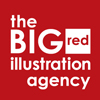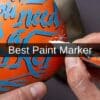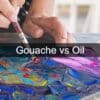How to Shade With Markers

When it comes to learning to shade with marker drawings, it can feel like a daunting task. Well, you’ll be glad to hear that there’s a technique for improving your artwork with permanent markers to make it more professional and streak-free.
Follow the steps below to discover what the techniques used by artists are for improving their blending and shading to create smooth artwork.
Preparation
- Use old pieces of paper to cover your desk if you’re using regular paper to draw with. However, if you’re using a sketchpad, you can skip this step.
- Start by drawing lines with each of your colors on a piece of paper and labelling the color choices. This swatch method enables you to get a clever picture of what the color looks like once the ink has dried.
- Take note of the lighter and darker shades of the coloring.
Shading With Markers
- Draw a circle pattern on the paper and choose one of the colors from your collection.
- If you’re using a permanent alcohol-based marker or acrylic markers, be sure that your strokes go in a single direction and that the strokes are broad.
- If you’re using a chalk marker or a blending marker, use a back-and-forth movement.
- Keep doing this until you fill the circle.
- To add layers to your work, use a marker that’s the same color but a different shade.
- If you want to add shadows, continue using the same color until you notice that the circle beings to develop a deeper look.
Shading With Blending Markers
- It’s common for blending markers to be colorless and for others to include mixing features.
- Start by choosing three markers that are the same color but in different shades.
- Draw a circle on a piece of paper and use your lightest color to fill in the entire circle.
- When it comes to using a colorless blender, use a back-and-forth flicking pattern in the areas where you see that the colors overlap.
- Next, start adding your darker shades to the blending process.
- Continue gradually filling in the circle with darker colors until you’re happy with how it looks. You may need to go back to some of the slightly lighter shade colors for the best results.
- Make sure that the ink dries properly once you’re finished.
Conclusion
After reading through our post about how to shade with markers, we hope that you’re feeling more assured about the process involved. Be sure to implement these tips and continue practising to improve your shading.
FAQs
What are the best markers for shading?
Alcohol-based markers and colorless blending markers are best for blending artwork. Many artists choose Copic markers.
What’s the best paper to use for shading?
Bristol paper is fantastic when it comes to improving your shading when drawing. It’s incredibly smooth and works well with all kinds of markers, including alcohol markers, oil-based markers, acrylic, and more.
Affiliate Disclosure
In compliance with the FTC guidelines, please assume the following about all links, posts, photos and other material on this website: Any/all of the links on this website are affiliate links of which The Big Red Illustration Agency receives a small commission from sales of certain items, but the price is the same for you. www.bigredillustrationagency.com is a participant in the Amazon Services LLC Associates Program, an affiliate advertising program designed to provide a means for sites to earn advertising fees by advertising and linking to Amazon.com & Amazon.co.uk. Pages on this site may include links to Amazon and its affiliate sites on which the owner of this website will make a referral commission.
FULL TERMS HERE Cookie preferences: cookie preferences

Written By Adam Rushton
Adam has made a name for himself in the illustration industry and is a passionate blogger and writer on the subject of art, illustration and graphic design.
His artwork has been featured in countless publications and used for very well-known media projects. As a professional illustrator for over 20 years, Adams media outlets, a wealth of knowledge, and experience enable him to consult and advise artists and illustrators in this country (from York and Manchester to Southampton and London) and all over the world.



































